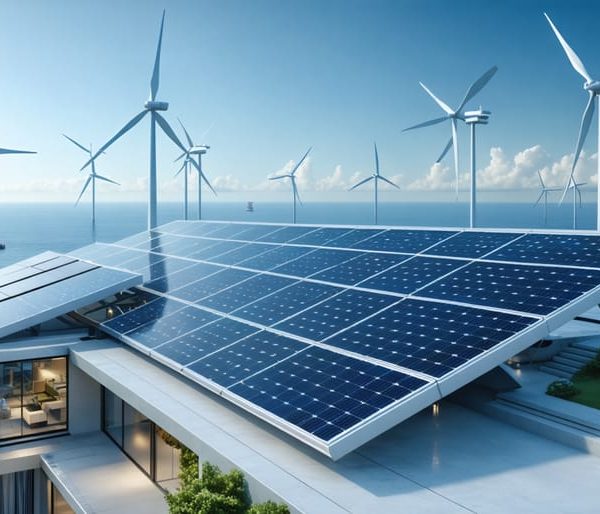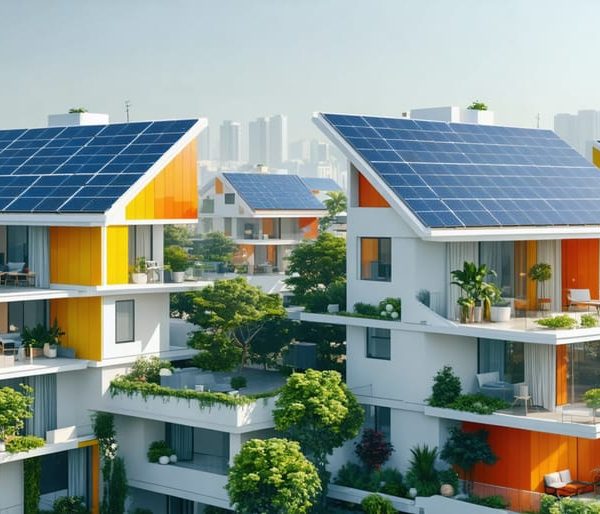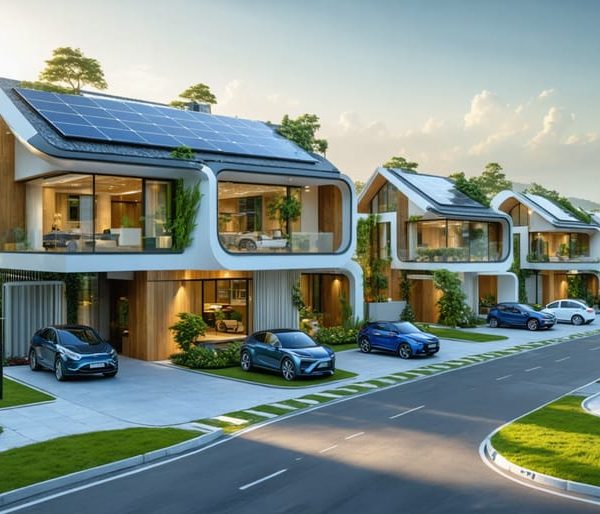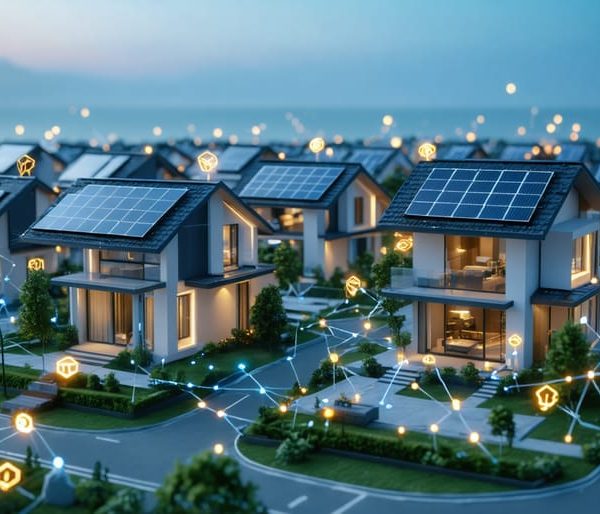These Breakthrough Solar Materials Are Revolutionizing Home Energy
The solar power revolution has ushered in a new generation of cutting-edge materials that are transforming how we harness the sun’s energy. Today’s solar panels achieve up to 23% efficiency through advanced silicon cells, while emerging perovskite technology promises to push those numbers even higher at a fraction of the cost. Breakthrough materials like transparent solar cells and flexible thin-film panels are opening up exciting possibilities for seamless integration into windows, roof tiles, and even vehicle surfaces.
These innovations aren’t just laboratory curiosities – they’re rapidly becoming practical solutions for homeowners and businesses alike. Modern solar materials are more durable, efficient, and affordable than ever before, with some new panels guaranteed to maintain 85% of their original output even after 25 years of continuous use. From self-cleaning surfaces that maximize light absorption to smart materials that adjust their properties based on weather conditions, the latest developments in solar technology are making sustainable energy more accessible and effective for everyone.
For property owners considering solar installation, understanding these material advances is crucial for making informed decisions that will impact energy savings for decades to come.
Next-Generation Photovoltaic Materials
Perovskite Solar Cells
Perovskite solar cells represent one of the most exciting breakthroughs in solar technology in recent years. These innovative materials are changing the game for home solar installations, offering incredible efficiency at a fraction of the cost of traditional silicon panels. Think of perovskites as the next generation of solar technology – they’re lightweight, flexible, and can be produced using simple manufacturing processes.
What makes perovskites special is their remarkable ability to convert sunlight into electricity even in low-light conditions, making them ideal for regions with variable weather. They can achieve efficiency rates above 25%, rivaling traditional silicon cells, while being much thinner and lighter. This means you can install more solar capacity on your roof without requiring additional structural support.
Another advantage of perovskite technology is its versatility. These materials can be sprayed or printed onto surfaces, potentially turning windows, walls, and even car surfaces into solar collectors. For homeowners, this could mean more options for integrating solar power into your property’s design without compromising aesthetics.
While perovskite technology is still being refined for long-term durability, researchers are making rapid progress. Many experts predict that within the next few years, perovskite solar panels will become widely available for home installation, offering an affordable and efficient way to harness solar energy. The future of solar power is looking brighter than ever, thanks to these innovative materials.
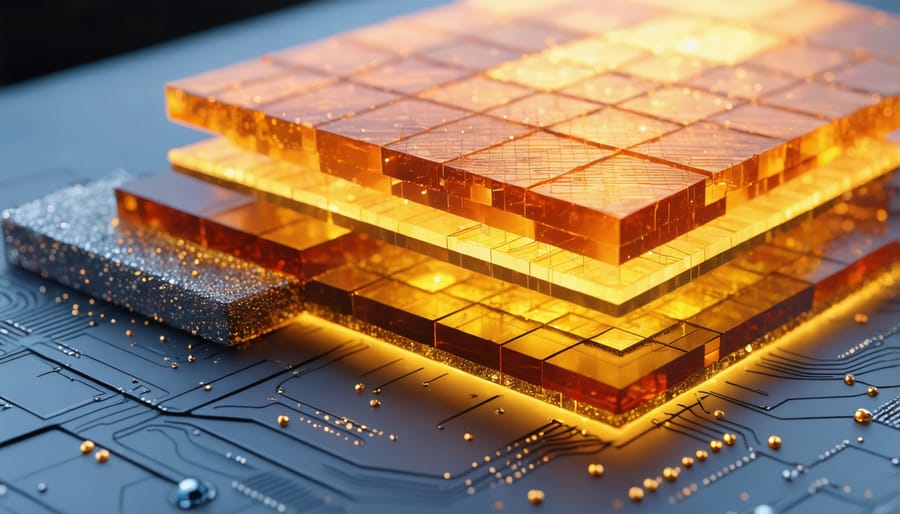
Transparent Solar Materials
Imagine turning your windows into power generators while maintaining their transparency. That’s exactly what transparent solar materials are achieving, revolutionizing how we think about building integrated photovoltaics. These innovative materials use specialized organic molecules that capture invisible ultraviolet and infrared light while letting visible light pass through.
The technology works by incorporating transparent luminescent solar concentrators (TLSC) into glass panels. These concentrators redirect specific wavelengths of sunlight to the edges of the window, where thin strips of conventional solar cells convert them into electricity. The result? Windows that look completely normal while quietly generating clean energy.
Current versions can achieve up to 10% transparency while maintaining reasonable energy production efficiency. While this might seem modest compared to traditional solar panels, the potential for widespread implementation is enormous. Think about it: skyscrapers, shopping malls, and homes could all generate power through their windows without compromising aesthetics or natural lighting.
Installation is surprisingly straightforward, as these materials can be integrated into existing window manufacturing processes or applied as films to existing windows. This makes them an attractive option for both new construction and retrofitting projects, offering property owners a unique way to embrace solar technology without sacrificing design elements.
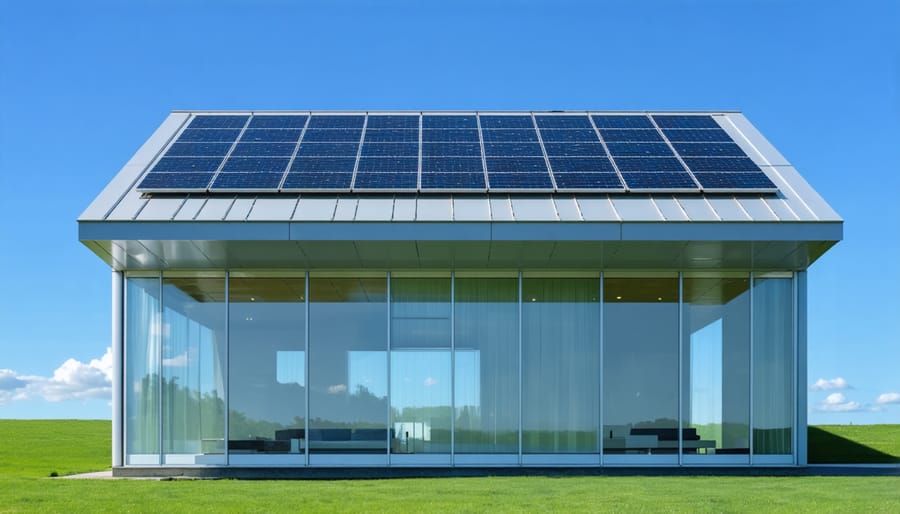
Smart Solar Materials for Your Home
Self-Cleaning Solar Surfaces
Keeping solar panels clean is crucial for maintaining their efficiency, but traditional cleaning methods can be time-consuming and costly. Fortunately, innovative self-cleaning surfaces are revolutionizing solar panel maintenance, making it easier than ever to maintain optimal energy production.
These advanced materials use nanotechnology to create surfaces that naturally repel dirt, dust, and other debris. The most common approach involves a hydrophobic coating that causes water to bead up and roll off the panel’s surface, taking accumulated dirt with it. This process, known as the “lotus effect,” mimics how lotus leaves stay clean in nature.
Some manufacturers have developed surfaces with titanium dioxide coatings that become activated by sunlight. When exposed to UV rays, these surfaces break down organic matter and prevent bacterial growth, keeping panels cleaner for longer periods. This photocatalytic effect can reduce cleaning frequency by up to 90%.
Another breakthrough comes in the form of electrostatic repulsion technology. These surfaces create a slight electrical charge that actively repels dust particles, preventing them from settling on the panels in the first place. Combined with rain or morning dew, these systems can maintain clean surfaces with minimal intervention.
The benefits are substantial: self-cleaning panels can increase energy output by up to 30% compared to dirty panels, while reducing maintenance costs significantly. For homeowners, this means fewer service calls and more consistent energy production throughout the year. Commercial installations benefit even more, as cleaning large solar arrays becomes virtually hands-free.
While these technologies may add slightly to initial installation costs, the long-term savings in maintenance and improved efficiency make them an increasingly popular choice for new solar installations.
Temperature-Responsive Solar Panels
Temperature fluctuations can significantly impact solar panel efficiency, but innovative materials are changing the game. These new temperature-responsive panels incorporate adaptive technologies that help maintain optimal performance regardless of weather conditions.
One breakthrough comes from thermochromic materials that automatically adjust their properties based on temperature changes. When it’s too hot, these materials become more reflective, preventing excess heat absorption that could reduce efficiency. During cooler periods, they maximize light absorption to maintain power generation.
Recent developments in smart solar technology have introduced self-regulating coatings that work like a building’s thermostat. These coatings contain special polymers that expand or contract depending on temperature, creating an automatic cooling effect when needed.
Phase-change materials (PCMs) are another exciting innovation. These substances absorb excess heat during peak temperatures and release it when the panel cools down, helping maintain consistent operating temperatures. This temperature regulation can improve overall panel efficiency by up to 15%.
For homeowners in varying climates, these adaptive materials offer several benefits:
– Reduced efficiency loss during heat waves
– Better performance in cold weather
– Extended panel lifespan
– Lower maintenance requirements
– More consistent energy production
While these technologies are still being refined, early adopters report significant improvements in year-round energy generation. As manufacturing costs decrease, temperature-responsive panels are becoming increasingly accessible for both residential and commercial applications, making them a promising investment for future-focused energy solutions.
Installation and Cost Considerations
Integration with Existing Systems
Integrating new solar energy materials with existing systems doesn’t have to be complicated or require a complete overhaul of your current setup. Most modern solar materials are designed with compatibility in mind, allowing for seamless integration with conventional solar installations.
For homeowners with existing panels, many new materials can be added as upgrades rather than replacements. For instance, advanced solar films can be applied directly to existing panels to enhance their efficiency, while smart monitoring systems can be connected to your current inverter setup to optimize performance.
When incorporating new materials, start by having a professional assess your current system’s compatibility. Key considerations include:
• Voltage matching between old and new components
• Available roof or ground space for additional panels
• Current wiring capacity
• Inverter compatibility
• Local building codes and regulations
Many manufacturers now offer hybrid solutions that allow you to gradually transition to newer technologies. For example, you can add high-efficiency panels to your existing array or incorporate energy storage systems without disrupting your current setup.
Remember to maintain proper documentation of your system’s specifications and keep warranty information updated. This helps ensure smooth integration of new components and prevents potential issues with insurance or certification requirements.
Most importantly, work with certified installers who have experience combining different generations of solar technology. Their expertise can help you maximize the benefits of new materials while preserving the value of your existing investment.
Cost-Benefit Analysis
Investing in solar energy materials offers compelling financial returns, both immediate and long-term. While the initial investment might seem substantial, modern solar installations can reduce energy costs by 40-75% in the first year alone. A typical residential solar panel system costs between $15,000 and $25,000, but federal tax incentives can offset up to 30% of this investment.
Most homeowners break even on their solar investment within 5-8 years, depending on local electricity rates and sunshine exposure. After this period, the energy savings become pure profit, with many systems generating $1,000-$2,000 in annual savings. Solar panels typically last 25-30 years, providing decades of free electricity after the initial payback period.
Beyond direct energy savings, solar installations increase property values by an average of 4.1%, according to recent real estate studies. Maintenance costs are minimal, usually requiring only occasional cleaning and system checks. Many manufacturers offer 25-year warranties, ensuring long-term performance and peace of mind.
Commercial properties often see even better returns due to larger scale installations and additional tax benefits. When combined with energy storage solutions, the cost-benefit ratio improves further by maximizing self-consumption and reducing peak demand charges.
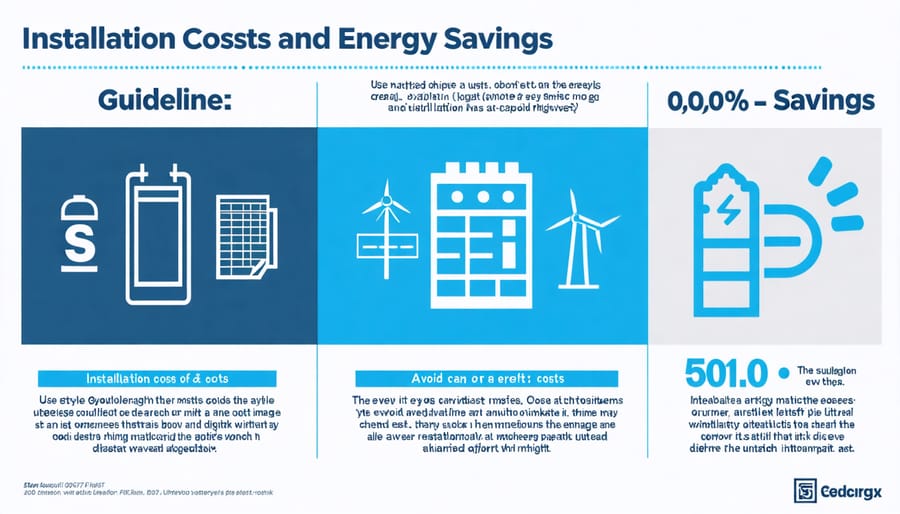
As we look to the future of solar energy, the possibilities are more exciting than ever. The emergence of innovative materials like perovskites, quantum dots, and transparent solar cells represents a significant leap forward in making solar power more accessible and efficient for homeowners. These advancements promise not only better energy conversion rates but also more versatile installation options that can blend seamlessly with your home’s architecture.
For homeowners considering solar adoption, now is an excellent time to start planning your renewable energy journey. Begin by assessing your property’s solar potential through a professional energy audit. Consider factors like roof orientation, local climate, and your household’s energy consumption patterns. While some cutting-edge materials are still in development, many proven technologies are already available and becoming more affordable each year.
The next practical steps include:
– Researching local solar installers and getting multiple quotes
– Checking available tax incentives and rebates in your area
– Reviewing your roof’s condition and planning any necessary repairs
– Calculating your potential energy savings with current solar technology
– Staying informed about emerging materials that might suit your needs
Remember that solar technology is continuously evolving. While you might not need to wait for the absolute latest innovations, it’s worth considering future-proofing your installation by choosing systems that can be upgraded as new materials become available. Many current solar panel systems are designed with modularity in mind, allowing for easier updates and additions as technology advances.
The shift toward sustainable energy is no longer just an environmental choice – it’s becoming a smart financial decision for many homeowners. As these new materials move from laboratories to rooftops, they’ll bring increased efficiency, lower costs, and more aesthetic options. By staying informed and working with qualified professionals, you can make the most of these exciting developments in solar energy materials while contributing to a more sustainable future.


